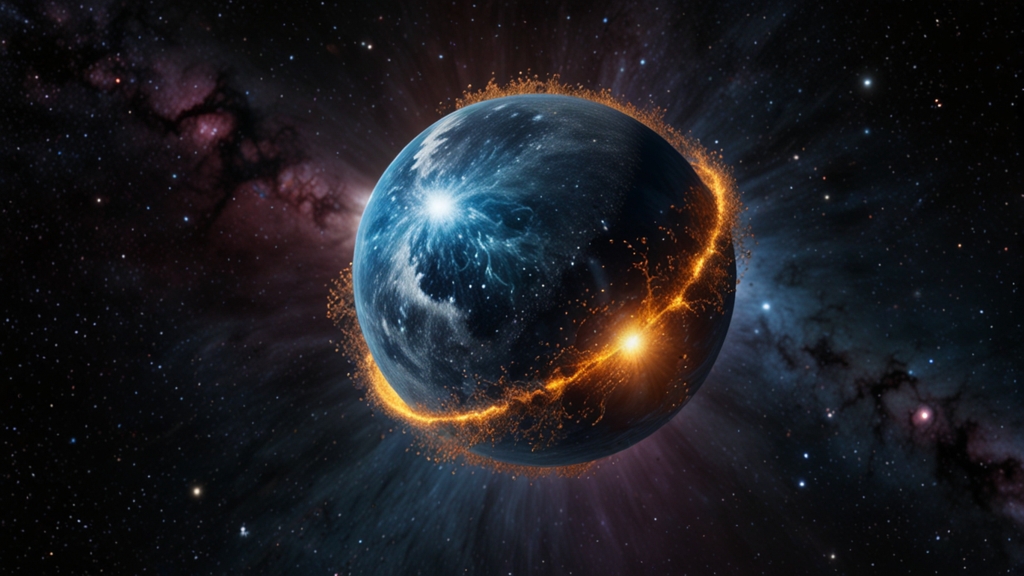The Enigma of Neutron Stars: Nature's Most Extreme Objects
When a massive star exhausts its nuclear fuel, it ends in a spectacular supernova explosion, leaving behind an incredibly dense core known as a neutron star. These stars are among the most extreme objects in the universe, with some properties so bizarre they defy human imagination. This article delves into the mysterious nature of neutron stars, exploring their formation, characteristics, and the fascinating phenomena associated with them.
Formation of Neutron Stars
Neutron stars are born from the violent deaths of other stars. When a star with a mass greater than about eight times that of the Sun runs out of nuclear fuel, it can no longer support itself against gravitational collapse. The core implodes, and the outer layers are blown away in a supernova explosion. What remains is an object with a mass between 1.4 and 3 times that of the Sun, but compressed into a sphere with a radius of only about 10 kilometers. This dense core is a neutron star.
"A neutron star is so dense that a sugar-cube-sized amount of its material would weigh as much as all the people on Earth combined."
Extreme Density and Gravity
The defining feature of a neutron star is its extreme density. A neutron star's density is comparable to the density of an atomic nucleus. In fact, if the radius of a neutron star were reduced by a mere 20%, it would collapse into a black hole. The gravity on the surface of a neutron star is about 2 billion times stronger than that on Earth's surface. This immense gravity means that any matter falling onto the star's surface is accelerated to incredibly high velocities, resulting in intense radiation.
Magnetic Fields and Pulsars
Neutron stars are also known for their extremely strong magnetic fields, which can be a trillion times stronger than Earth's magnetic field. These magnetic fields can accelerate particles to near the speed of light, producing beams of electromagnetic radiation. When a neutron star's magnetic axis is not aligned with its rotational axis, the beams of radiation sweep across space like lighthouse beams.
"These spinning neutron stars, known as pulsars, emit regular pulses of radiation that can be detected from Earth, making them cosmic lighthouses."
The Equation of State: A Major Mystery
One of the biggest puzzles in the study of neutron stars is the "equation of state," which describes how matter behaves at the incredibly high densities found inside a neutron star. Scientists are unsure whether the cores of neutron stars contain exotic states of matter, such as quark-gluon plasma, hyperons, or even more bizarre theoretical particles. Solving this mystery could provide critical insights into fundamental physics.
Neutron Star Mergers
Neutron stars are not just static objects; they can undergo dramatic interactions, particularly through mergers. When two neutron stars in a binary system spiral into each other and collide, they create gravitational waves and electromagnetic signals that are detectable across the universe. The first observed neutron star merger in 2017 provided unprecedented data, helping astronomers better understand the nature of neutron stars and the origins of heavy elements like gold and platinum.
"The collision of two neutron stars is among the most energetic events in the universe, releasing as much energy as our Sun will produce over its entire 10-billion-year lifetime in just a few seconds."
Conclusion
Neutron stars are among the most fascinating and extreme objects in the universe. From their formation in the fiery hearts of supernovae to their incredible density and gravity, and their role as cosmic lighthouses and sources of gravitational waves, neutron stars challenge our understanding of physics and the cosmos. Continued research and observations will hopefully solve the many enigmas surrounding these extraordinary celestial objects, opening new windows into the mysteries of the universe.











